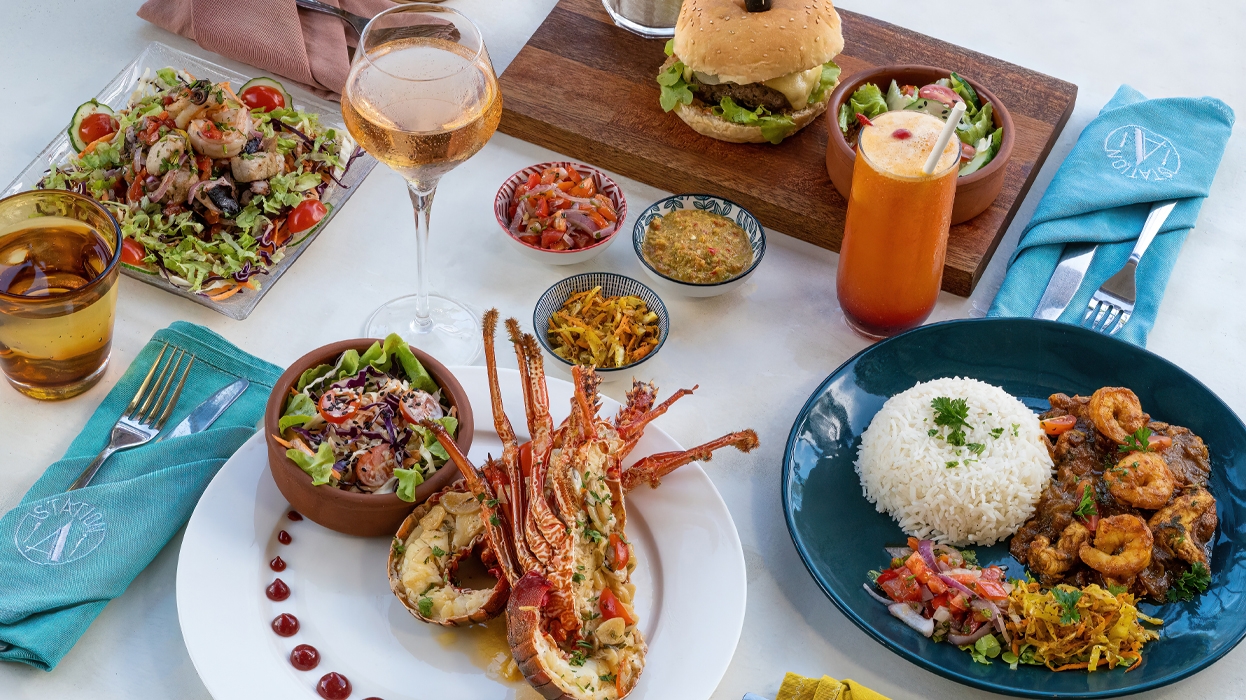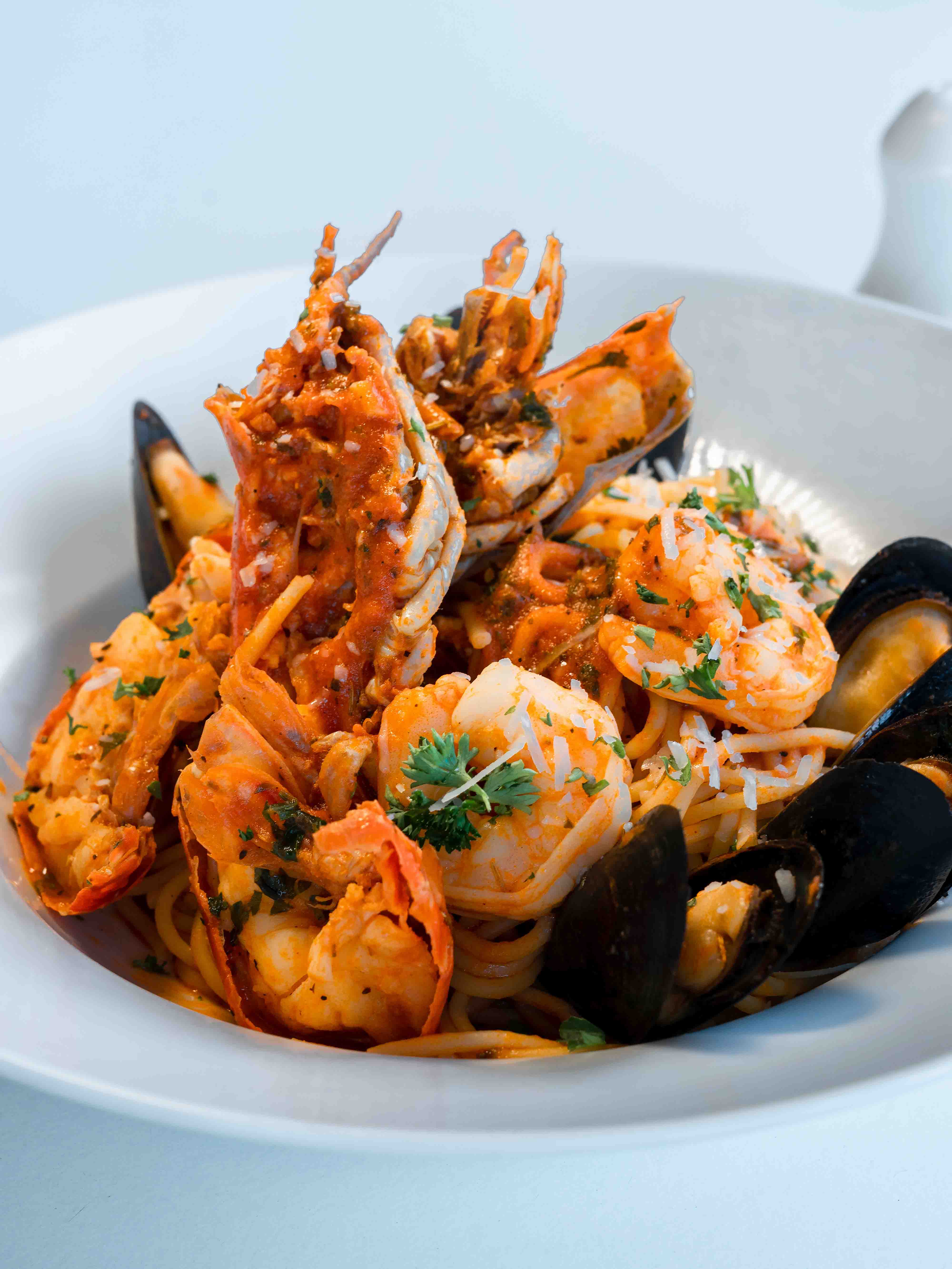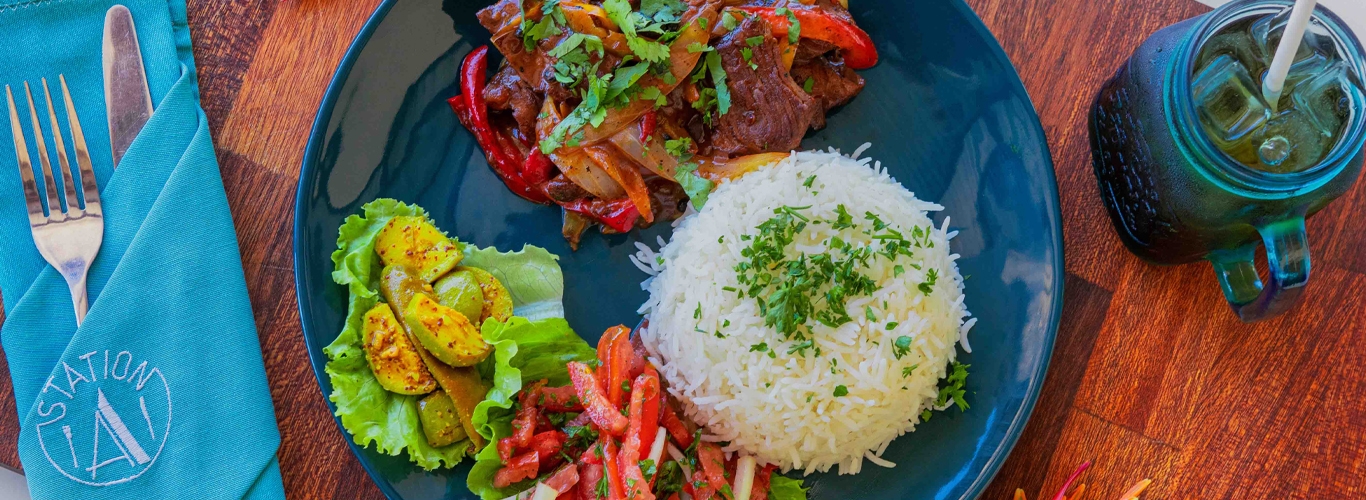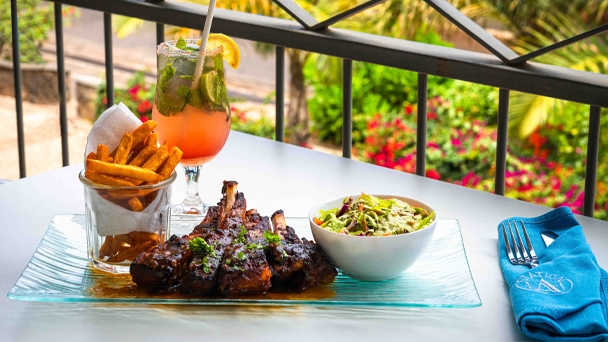Mauritius: a tropical paradise where life is incomparably easy, Paradise Island - as it is known - is renowned for its charm and idyllic setting, with its tropical climate, white sandy beaches and lush natural surroundings.
Mauritians are a reflection of their way of life: welcoming, warm and made up of many ethnic and cultural origins.

This diversity is also reflected in Mauritian cuisine, a delicious blend of authentic flavours with African, Indian, Chinese, Creole and European influences.
Ready for a gastronomic tour of Mauritius? Discover its origins and exceptional richness through its diversity, authenticity and unique cultural heritage.
Discovering Mauritius also means discovering its exceptional cuisine!
What are the origins and influences of Mauritian gastronomy?
Traditional Mauritian cuisine is a fusion of flavours, spices and creativity. It is a true testament to the cultural diversity of Mauritius.
Over the centuries, the island has been shaped by different waves of immigration and encounters between peoples. Its history is marked by exchanges and influences from all over the world.
The French influence on gastronomy in Mauritius
From the 18th century onwards, the arrival of the French colonists transformed Mauritian gastronomy even further. The French introduced a wide variety of ingredients, spices and sophisticated cooking techniques. They brought with them their own gastronomic culture. Many French dishes and desserts were integrated into the local cuisine, giving rise to a unique blend of European and tropical flavours.
In the 19th century, the abolition of slavery also had a major impact on Mauritian gastronomy. New workers arrived in Mauritius from India, China and Africa to work on the island's sugar plantations. These immigrants brought with them their culinary traditions, which were gradually integrated into the constantly evolving Mauritian cuisine.
The importance of Indian immigration in Mauritian gastronomy
Indian immigration has been very important in the evolution of Mauritian cuisine. The many Indian workers introduced a wide range of cereals, spices and cooking techniques that have had a lasting influence on local cuisine.
Dishes such as curry, dholl puri and biryani have become staples of Mauritian cuisine, reflecting the importance of Indian immigration to Mauritian society.
Creole, Chinese and African influences on traditional Mauritian cuisine
Chinese immigration has also left a lasting mark on traditional Mauritian cuisine. The Chinese brought with them noodles, wok cooking and a variety of condiments and sauces that are now widely used in local cuisine. Today's must-try dishes in Mauritius, such as fried noodles (mine frit) and meat or fish dumplings, are perfect examples of the Chinese influence on Mauritian cuisine.
The African and Madagascan communities, for their part, have contributed to the use of manioc and taro as basic ingredients in local cuisine.
Lastly, the Creole population of Mauritius, which is the result of the blending of different cultures present on the island, has developed its own traditional cuisine with multiple flavours by fusing elements from different culinary traditions.
What are the essential ingredients of Mauritian cuisine?
Mauritian cuisine is colourful and traditional, drawing on the influence of its Creole, Indian, European, Asian and African communities. It perfectly reflects the diversity and harmony of these different cultures.
However, certain ingredients are essential to Mauritian culinary specialities: you'll find them in most of your dishes! You'll find :
- Tomatoes, in several varieties
- Garlic and onions, which are present in almost all recipes
- Ginger, with its Indian and Asian influences
- Chilli: whole, crushed or powdered, you'll find it in all its forms to spice up your dishes and tantalise your taste buds
- Coriander
- Various spices: cloves, star anise, cinnamon, turmeric, curry leaves, etc.
What are the culinary specialities of Mauritius?
Mauritius offers an extraordinary culinary diversity: awaken your senses by discovering some of the finest Mauritian flavours.
Street food in Mauritius
How could we not begin our tour of Mauritian culinary specialities with street food? You only have to wander through the narrow streets of any town in Mauritius to discover these typical local street-food dishes:
- Dholl Puri is probably the most popular dish on the island, eaten by tourists and locals alike. It's a local creation, an authentic Mauritian culinary speciality! These large flatbreads are made from chickpea flour, then stuffed with pea curry, rougail, chatini and a candied Rodrigues chilli pepper. A must-try.
- Mauritian dumplings: originally from Asia, these can be found in every street in Mauritius, accompanied by a good hot broth. There are four variations: fish dumplings, meat dumplings, Sao-Maï dumplings and chouchou dumplings made with chayote, a local vegetable.
- Cari pom de ter" samoussas: this is a vegetarian version of the typical Indian samoussas. Very popular with Mauritians, they are made with a masala potato curry filling.
- Gato Pima": once again, this is a staple of Mauritian street food. Small balls of split peas, they are flavoured with coriander and chilli and fried in oil. In all honesty, they're a real delight.
- Gato Arouille": these are also small dumplings fried in oil, crunchy on the outside and soft on the inside. They are made from arouille, a small tuber also known as taro.
Typical Mauritian dishes
Discover 8 recipes typical of Mauritian cuisine, to be enjoyed without moderation during your stay in Mauritius.
- Cari: prepared with meat, chicken or fish and cooked in a spicy curry and chilli sauce, this dish inspired by Indian curry recipes is widely eaten by Mauritians of all origins. It can be eaten with rice or bread.
- Fish Vindaye: also originally from India, Vindaye is fried in oil before being mixed with spices, onions, garlic, chillies and vinegar to enhance its flavour. It is often served with bread or rice.
- Daube: made from wild boar or chicken, this is a reference to the French influences passed on to Mauritian cuisine.
- Mine Frit: this is a Mauritian adaptation of Chinese noodles sautéed with vegetables, meat or seafood. It is spiced up with a garlic or chilli sauce.
- Rougail de poisson (fish rougail): typically Creole, rougail is mainly made with a tomato, garlic, ginger, onion, chilli and spice sauce. Salted fish, or 'sounouk' in Mauritius, is added. It is served with white rice and lentils.
- Biryani or 'Briani': originally a Muslim dish, this is made with saffron rice and lamb, chicken or fish, then mixed with spices and vegetables. There is also a vegetarian version.
- Chatini (Chutney): Chatini is a typically Mauritian Creole word, the equivalent of English chutney. It is a raw, spicy condiment made from various chopped fruits and vegetables: tomato, mango, cucumber, etc. It is often served as an accompaniment to dishes. It is often served with Mauritian rice dishes.
- Grilled seafood: with the abundance of fresh fish and seafood available in the lagoon surrounding the island, grilled seafood dishes are very popular and always delicious.

Mauritius is no stranger to desserts: Indian pastries, sweet potato cakes, coconut cakes and "Poudine Mais" (corn pudding) are perfect examples.
The drinks are not to be forgotten either: Lassi (frozen yoghurt of Indian origin), and Alouda, a milky drink sweetened with agar-agar and flavoured with almond or vanilla.
Finally, Mauritian rum is renowned the world over for its complex flavour and unique character.
In short, the richness of Mauritian gastronomy lies in its diversity, authentic flavours and unique cultural heritage, making every meal a true culinary adventure.
Discover the flavours of Mauritius at Station A, the Domaine d'Anbalaba restaurant
Domaine d'Anbalaba is the new must-see place to live in the south of Mauritius.
Everything has been brought together to meet the needs and expectations of residents, locals and seasonal visitors alike, and to satisfy their desire to discover Mauritian gastronomy. A large Creole house with a monthly market on its esplanade, our Station A restaurant is the place to be for colourful culinary adventures.
So, on the veranda overlooking the lagoon, take time out for a gourmet break and sample some delicious Mauritian cuisine.






